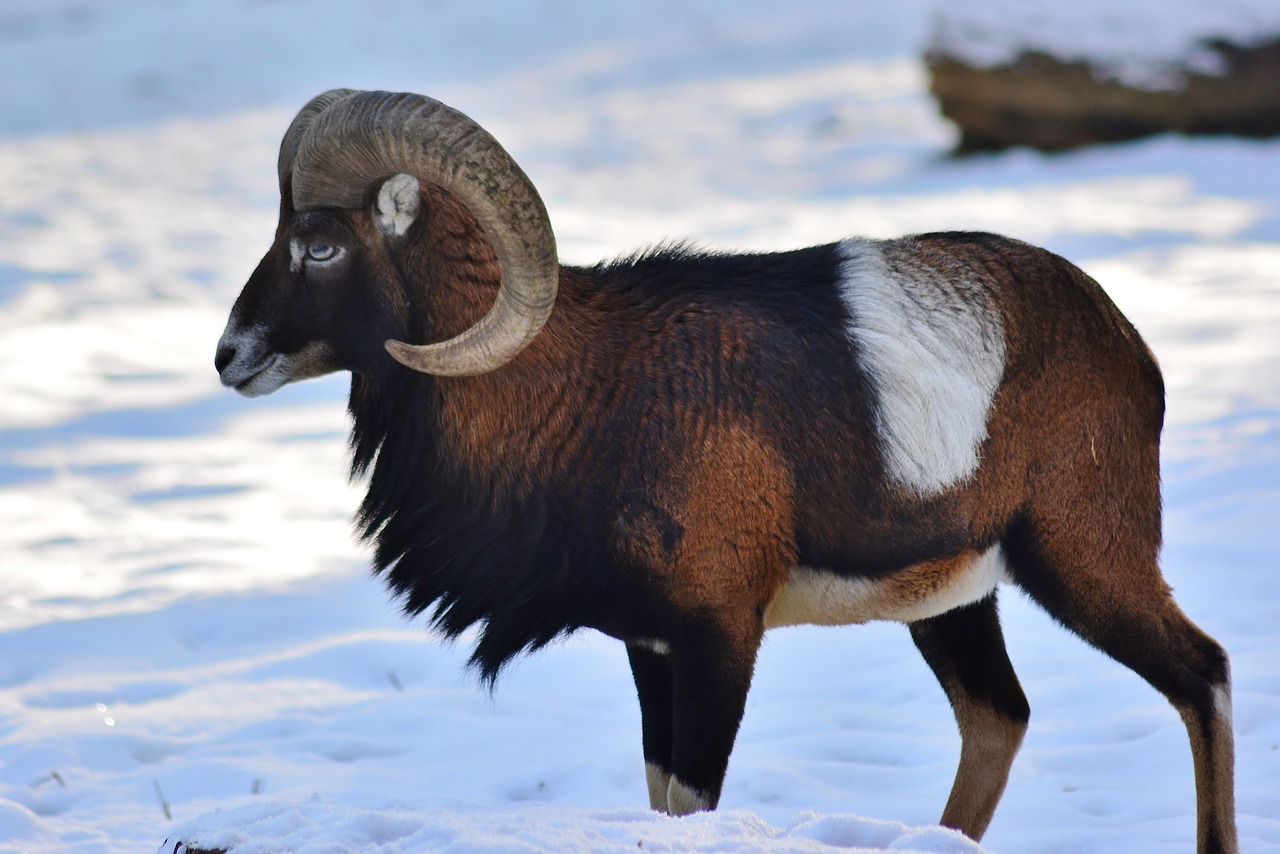Mouflon indentation

The mouflon is a flock-living mountain sheep with short hair and a tail, and is considered the ancestor of domestic sheep. The species originates from the dry islands of the Mediterranean, from where it was introduced to other countries as a game animal. In Sweden, mouflon is mostly found in game enclosures. In a few places in the Mälaren Valley, animals that have escaped have formed free-living populations. The species has also been released on some coastal islands.
Mouflon belong to the group of hollow-horned animals. Unlike deer, they do not shed their horns. Instead, the horns grow in length and thickness throughout life. The ram’s horns are crescent-shaped and curved, and in adult animals, they are often almost a full spiral or more. Ewes are smaller and either lack horns or have only short horn stubs.
Mouflon prefer dry, rocky terrain and mainly forage close to the ground. They primarily eat fine grasses and herbs of various kinds, but in autumn and winter they also eat shrubs, lichens, and saplings—especially young shoots of deciduous trees like aspen, rowan, and hazel. Mouflon can graze as high as one and a half meters off the ground by standing on their hind legs. They may also gnaw on the bark of conifers, especially in winter. Nutritional competition with roe deer can occur.
The rutting season occurs from October to December. Only the dominant rams usually get the chance to mate. In Sweden, ewes become sexually mature at around one and a half years old and usually give birth to one lamb after a five-month gestation.
Mouflon are mostly active during the day and at dusk. Under undisturbed conditions, ewes, lambs, and young rams form flocks that stay together year-round. Older rams form their own groups, and the oldest often live alone. They only join the females during the rut.
Free-living mouflon populations are easy to manage because the species is strongly flock-living and very site-faithful. Common hunting methods include stalking.
The tracks are characterized by short stride length and triangular-shaped hoofprints, around six centimeters long.
Hunting and Hunting Methods
Mouflon are mainly hunted in game enclosures where the majority of Sweden’s population is found. The animals’ strong flocking behavior and limited home ranges make them relatively easy to manage and hunt.
The most common hunting method is still hunting or stalking, where the hunter moves quietly and slowly through the terrain to locate and approach the game. Because mouflon are often active during daylight and stay in open or semi-open terrain, stalking can be effective.
Ambush hunting, especially near known feeding areas or watering holes, is also used. Mouflon are attentive and have sharp senses, especially hearing and sight, so approaching them requires care and silence.
Driven hunts are less common but may occur in larger enclosures or in areas with free-ranging populations. These hunts require good coordination and knowledge of the animals’ escape routes.
Mouflon hunting requires patience, good fieldcraft, and awareness of wind direction and terrain. Due to their curved horns, rams are also considered attractive trophy animals.
SUMMARY
- Mouflon in Sweden are found almost exclusively in game enclosures.
- Mouflon are considered to be the ancestors of domestic sheep.
- As with other hollow-horned animals, their horns do not shed but grow throughout life.
